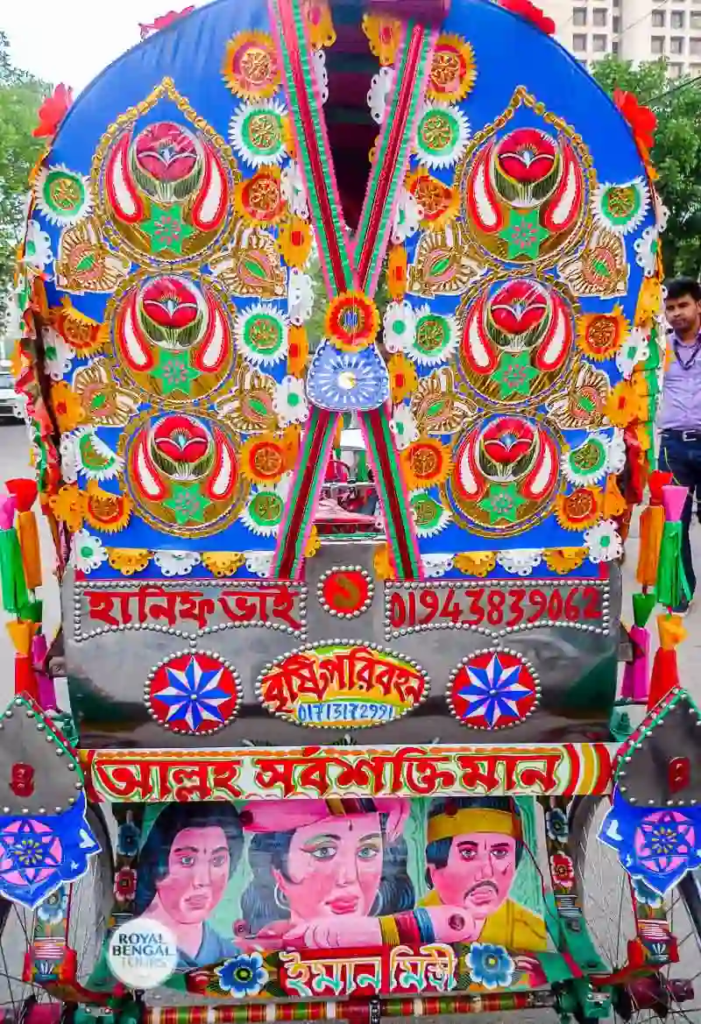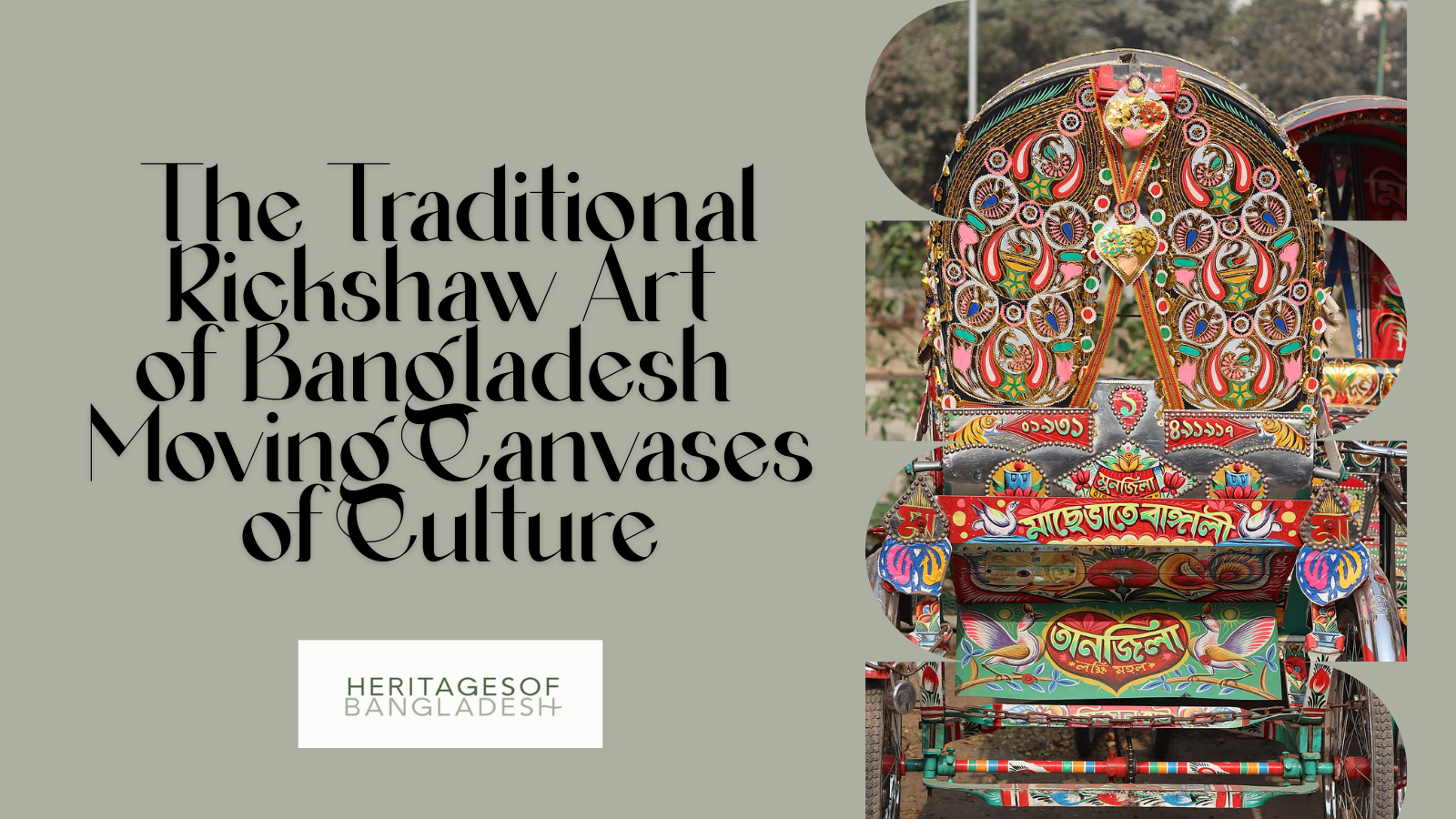Among the bustling streets of Dhaka, Chattogram, and Sylhet, you’ll find a vibrant, colorful expression of Bangladeshi folk art in the most unexpected place — the humble rickshaw. Often called the “moving art galleries of the streets,” rickshaw art is a unique and captivating tradition that blends storytelling, pop culture, religion, and national pride.
Origins and Evolution
Rickshaw art emerged in the 1950s, soon after rickshaws became a popular mode of transport in urban Bangladesh. Initially, the designs were simple floral patterns or abstract motifs. Over time, this evolved into elaborate hand-painted images of film stars, animals, historical scenes, rural life, religious icons, and patriotic themes.
This art form reached its peak between the 1970s and 1990s, when rickshaw painters were in high demand, and neighborhoods became known for their master artists.
Themes and Symbolism
Each rickshaw is a canvas that reflects the imagination of its artist. Some of the most common themes include:
- Cinema-inspired scenes – Often featuring famous Bangladeshi or Indian film heroes in action poses.
- Mythological or religious stories – Illustrations of tales from the Ramayana, Mahabharata, or Islamic symbolism.
- Patriotic depictions – Portraits of national leaders like Bangabandhu Sheikh Mujibur Rahman or the Liberation War of 1971.
- Idealized rural life – Farmers, rivers, boats, and fields that romanticize the countryside.
- Fantasy creatures – Tigers with wings, flying horses, and surreal dreamscapes.

What makes these works special is their naïve art style, bold use of color, and complete creative freedom.
The Artists Behind the Magic
Rickshaw artists are usually self-taught and work in small workshops or garages. Many of them pass their skills from one generation to the next. Their tools are simple — brushes, enamel paints, and sheet metal — but their vision is bold and limitless.

In many cases, the rickshaw owner and painter collaborate, making each piece highly personal and one-of-a-kind.
Challenges and Decline
With the rise of digital printing and motorized transport, traditional hand-painted rickshaw art is slowly disappearing. Plastic panels and stickers have replaced hand-painting in many urban centers. Moreover, strict traffic regulations in cities like Dhaka have reduced the number of rickshaws on the road.
This has put many talented artists out of work, and an entire generation’s craftsmanship is at risk of being forgotten.
Preservation Efforts and Global Recognitio
Fortunately, there are ongoing efforts by art lovers, NGOs, and cultural institutions to preserve this unique form of Bangladeshi folk art. Rickshaw paintings are now being displayed in museums, galleries, and international art festivals, and even used in fashion and interior design.

Artists like Shahedul Islam and Quamrul Hassan have helped elevate rickshaw art to serious artistic recognition. Workshops and exhibitions are occasionally organized to teach and celebrate this fading tradition.
Conclusion
Rickshaw art is more than just decoration — it is a visual language of the streets, telling stories of love, faith, dreams, and identity. As a vibrant part of Bangladesh’s cultural heritage, it deserves admiration, respect, and preservation. Keeping this art alive means keeping a part of our collective soul intact — colorful, bold, and beautifully Bengali.

